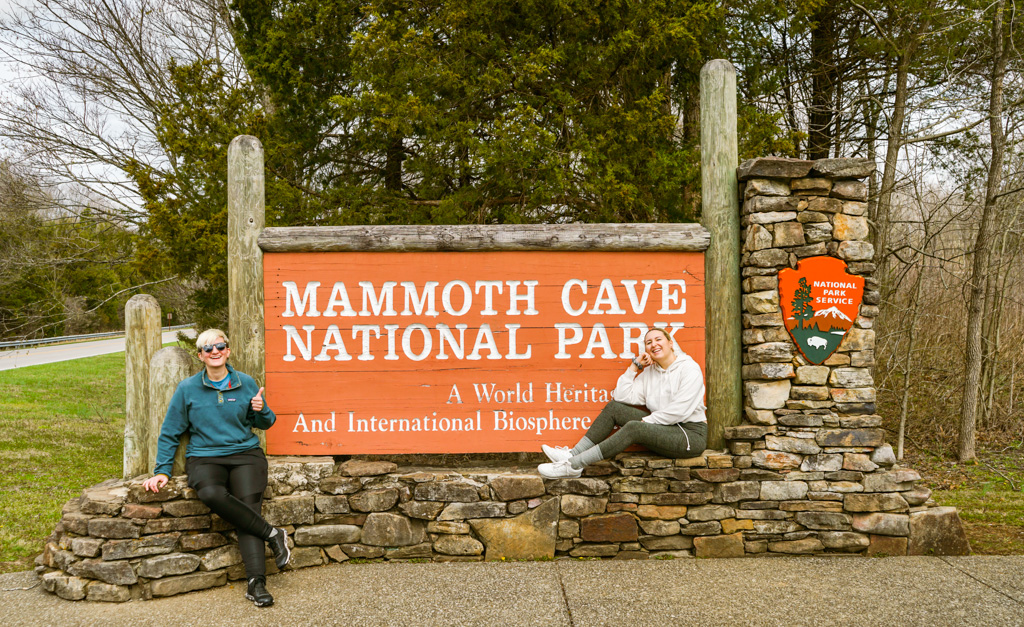Half of the experience is above ground! While Mammoth Cave National Park’s star attraction is it’s cave – the longest known cave system in the entire world – there’s an entire adventure waiting on the surface. The park has 66 miles of trails north of the Green River, and 19 miles of trails south of the river. You can check out our full post on what it’s like in the cave here, but read on for our full guide to hiking the front country – without spending a single dollar!
Private Farmland to Public Park
Before Mammoth Cave became a part of the national park system, the landscape above the cave system was privately owned, most of which was farmland and houses. So the Civilian Conservation Core, otherwise known as the CCC, got to work.
In the 1930s and 40s, the CCC were a voluntary government work relief program that laid the foundation for the park. During their time in the park, they built the trails, the historic cottages, and planted nearly all of the flora on the surface. So, as you hike through the front and backcountry, keep in mind: the entire forest you walk through is man made!
What certainly isn’t man made are the sinkholes and underground streams that emerge from the cave below. The landscape above Mammoth Cave National Park is called karst, where years of waterflow has dissolved layers of bedrock. Consequently, this is what forms the sinkholes and cave entrances. Moreover, it’s a rare opportunity to see up close and personal how the earth underground directly impacts the surface and ecosystem! If nothing else, such a revelation caused Chris to shed a tear or two.
The Price IS Right!
What’s unique about Mammoth Cave National Park is that there’s no admission fee to get into the park. In short, that means that the entirety of the front country trails is free of charge, and better yet, there are no reservations required.
While we didn’t get to hike through the backcountry, there are over 60 miles worth of trails to explore. However, you’ll need a permit to thruhike and camp overnight, and you can book your reservations at Recreation.gov.
Hiking Guide to Mammoth Cave
Note that we did not hike the entirety of the front country, but did the majority around the Visitor Center! As always, make sure to leave no trace on your hikes! Pack out what you pack in and stay on trail to preserve the fragile ecosystems of the park!
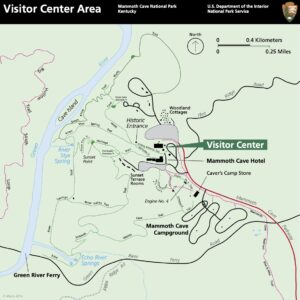
©nps.gov
Accessible Trails
Firstly, we want to highlight Mammoth Cave National Park’s accessible trails! These trails are ideal for young explorers, those with disabilities or mobility issues, or those seeking a walk without stairs. It truly goes to show that national parks are for everyone, regardless of experience level. And just because these trails aren’t necessarily lengthy doesn’t mean they’re not fun or packed with amazing sights! Many of the informational signs along the accessible trails also include a text-to-speech feature that will audibly read aloud what is written for those who are visually impaired. We’d also never seen so much signage that denoted surface explanation, tread width, grade, and cross slope!
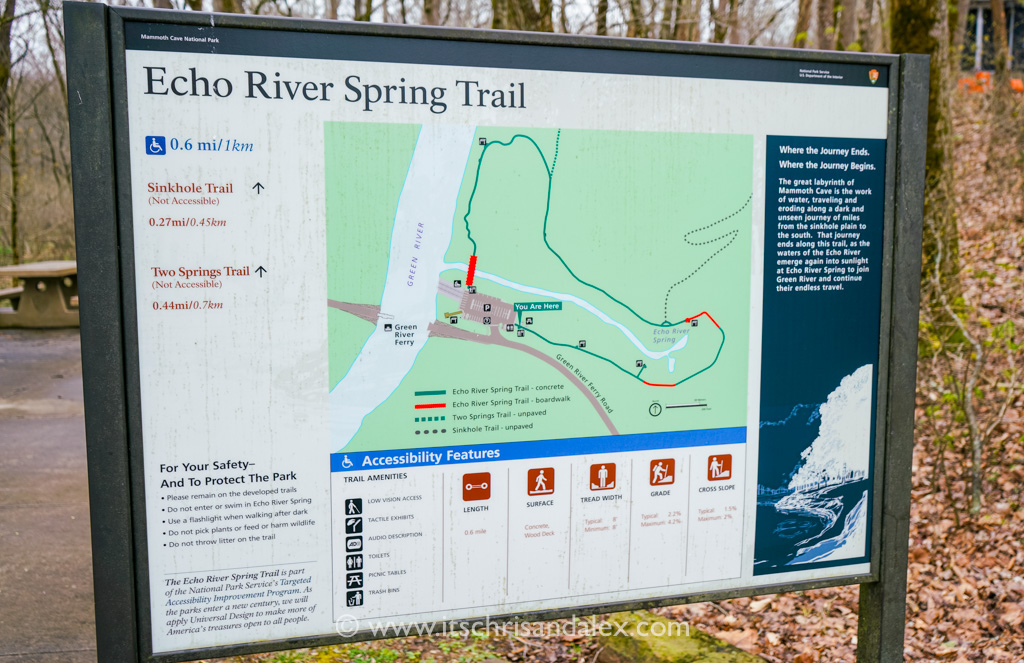
©www.itschrisandalex.com
Note: We will say that we visited the park 2 weeks after a severe wind storm that overturned several trees across the park. Some of which fell across accessible trails and were not yet cleared. Make sure to read our Know Before You Go section below to help plan the logistics of your trip accordingly!
Heritage Trail
0.5 miles – This loop trail begins behind the Lodge and the Visitor Center, and it’s an ideal walk for those who want to learn more of the park’s history. At the halfway point of the walk is Sunset Point, a perfect spot to watch, wait for it… sunset!
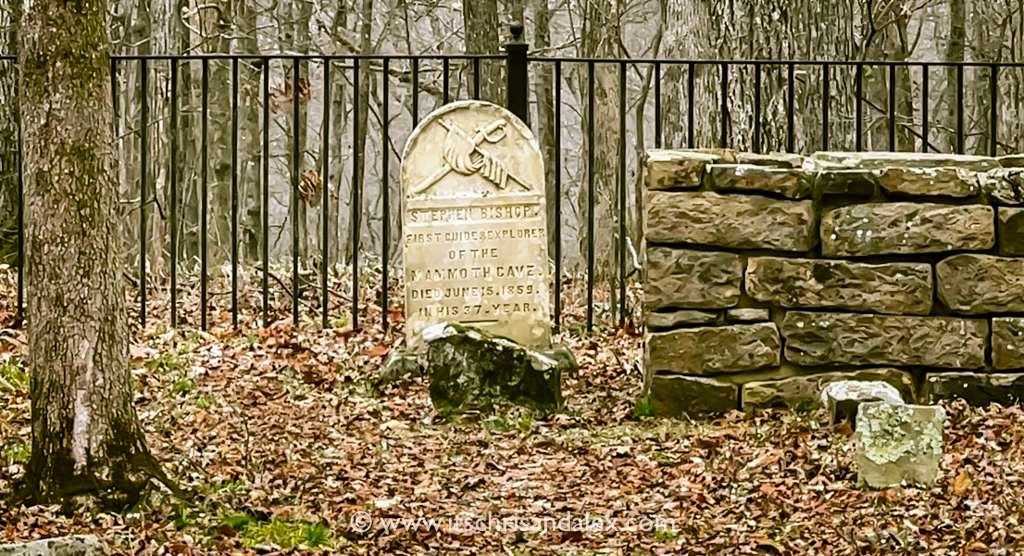
©www.itschrisandalex.com
In addition, along the trail is the Old Guides’ Cemetery, the final resting place of Stephen Bishop and 3 patients from the tuberculosis experiment. If you go on any of the cave tours, you’ll know how impactful Bishop’s legacy was as a trail-blazing African American slave, so to visit his gravestone makes the Mammoth Cave experience a full circle. Want to learn even more? Head to the Visitor Center and explore the museum there – it’s completely free and well done!
Echo River Springs Trail
0.6 miles – A boardwalk loop with views of the Echo River Springs. What’s amazing is that Echo River resides 360 feet below the surface in Mammoth Cave. The spring is where the underground river emerges to the surface and flows out as a tributary to the Green River. The mineral rich water looks like a mix of lime and turquoise that may have inspired us to paint some walls this color in the future.
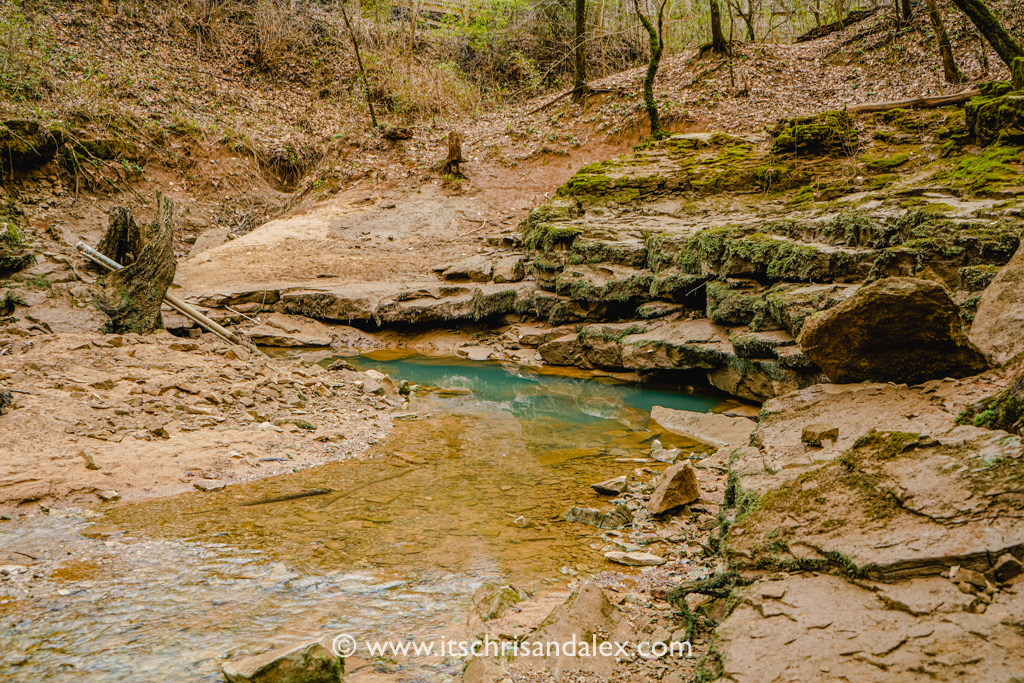
©www.itschrisandalex.com
Above all, what we loved about this trail was not only the info boards along the walk, BUT that each display had an accompanying speaker with buttons that would provide a voiceover when pushed. In other words, measures like these affirm the lengths the national park system makes efforts to ensure that nature truly able to be enjoyed by ALL.
Sloan’s Crossing Pond Walk
.04 miles – This is a short, leisurely boardwalk loop around the perimeter of Sloan’s Crossing Pond. It’s perfect for birders and admirers of flora and fauna. We found it to be a great opportunity to break away from the bustling Visitor Center down the road and see a unique ecosystem in the park.
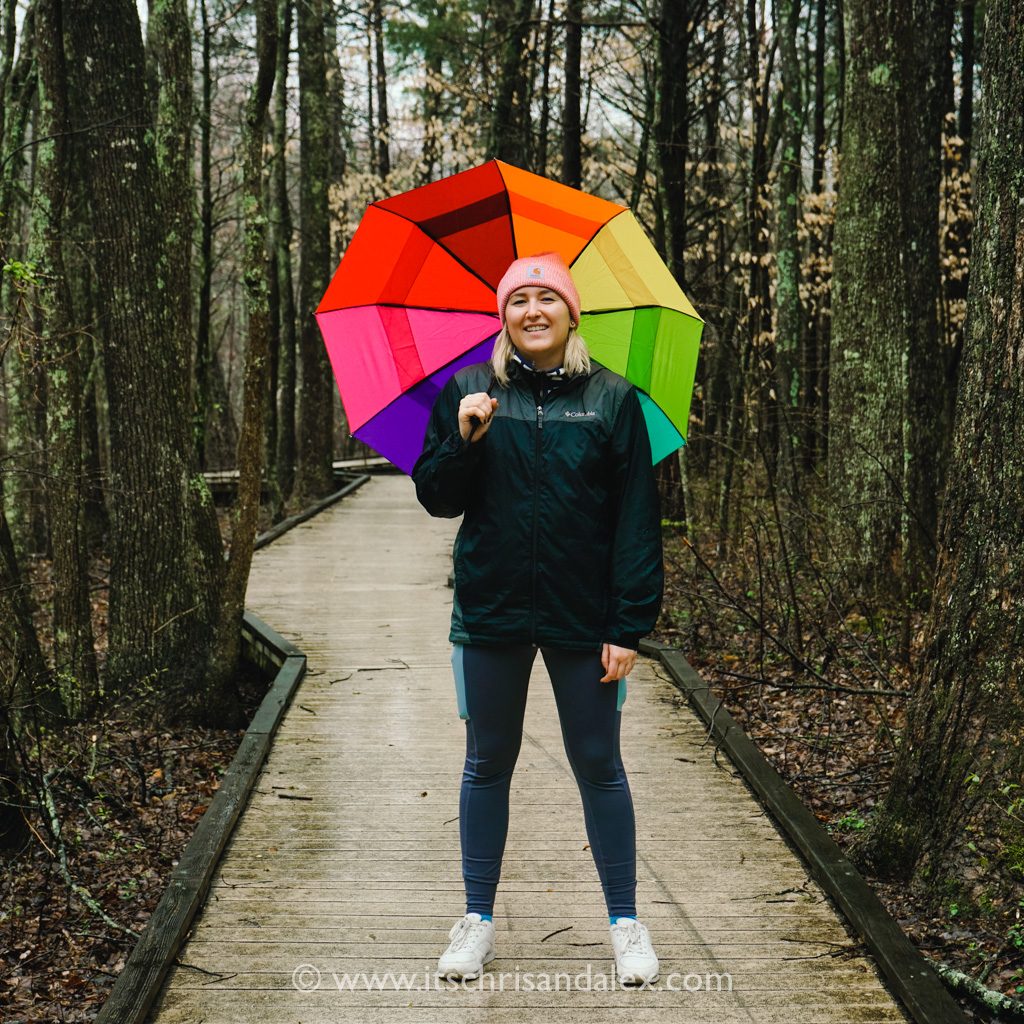
©www.itschrisandalex.com
Sloan’s Crossing Pond was one of the CCC projects while the park was being developed. While the pond already existed, the CCC cleared away the debris and expanded its size in hopes of supporting more wildlife. Like the frog Chris found hanging out during a rainstorm!
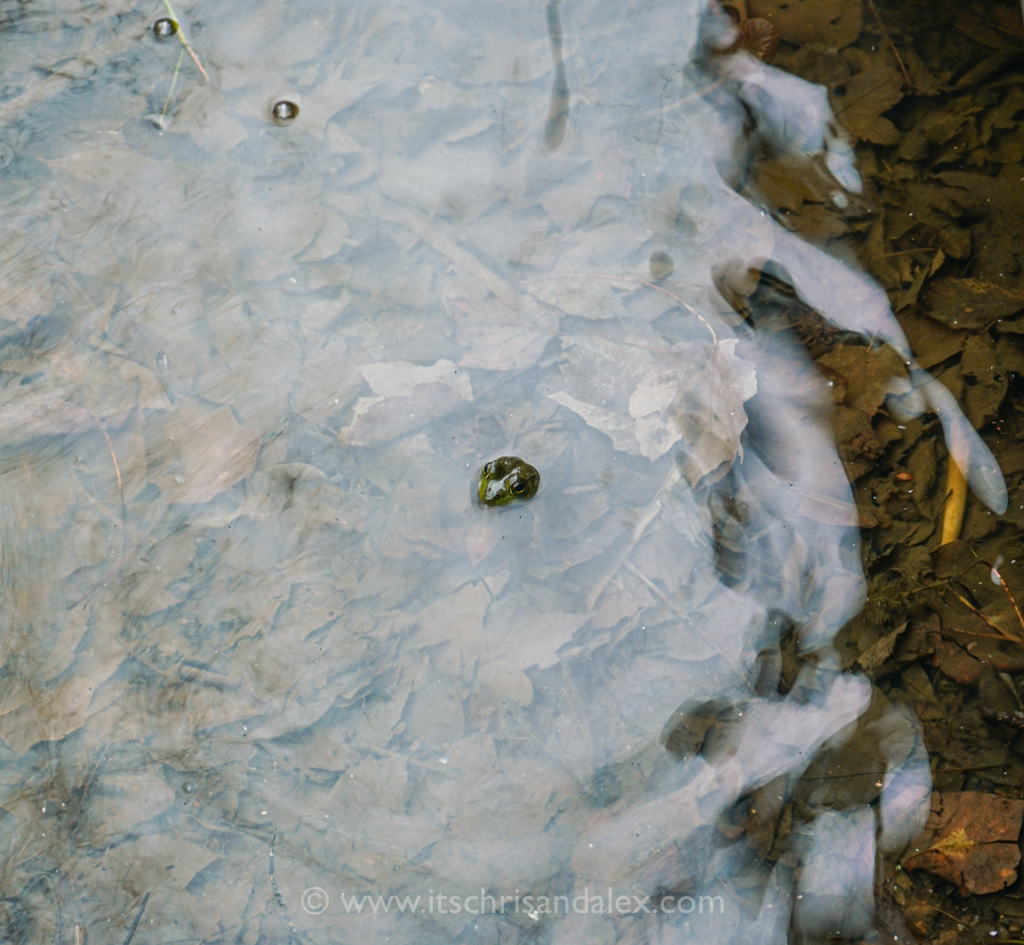
©www.itschrisandalex.com
Easy and Moderate Hikes
After those warm ups, ready to hit the trails? Here are a few hikes within Mammoth Cave National Park to start you off!
Mammoth Dome Sink
1 mile – Also known as the “Sinkhole Trail” on the map. From the Echo Springs Spring Trail, head uphill past Whites Cave for a dramatic view of the Mammoth Dome Sink. This is another one of those instances where it’s so cool to connect what you’ve seen underground with what exists above ground!
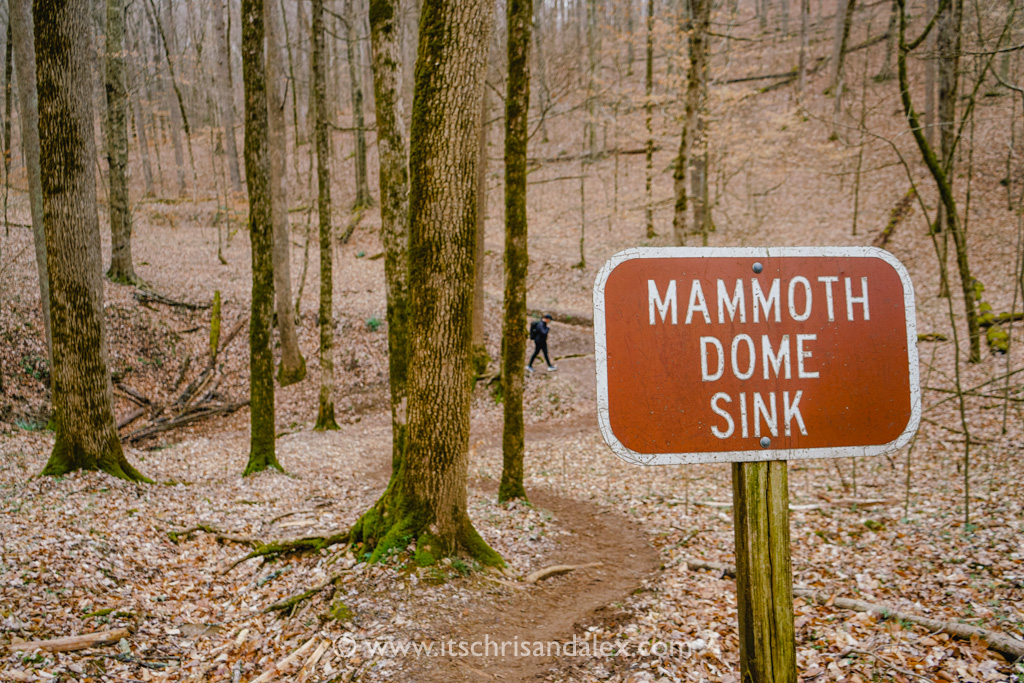
©www.itschrisandalex.com
How many times can you say you’ve seen what’s below your feet as you’re walking on it?! It’s the very sinkhole that empties out as a waterfall into the Tower of Mammoth Dome below in the cave. Mammoth Dome is taller than Niagara Falls and the Statue of Liberty!
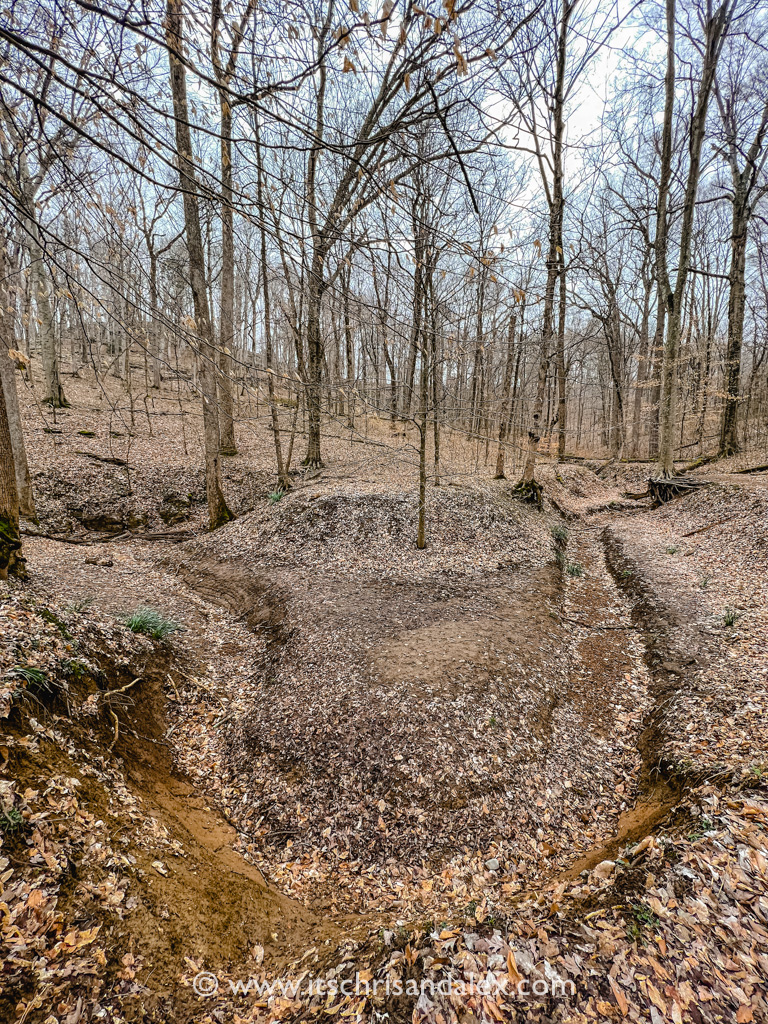
Sunset Point and Sunset Trail
0.4 miles – At the midpoint of the Heritage Trail loop is Sunset Point, an elevated viewpoint that overlooks the Green River and valley below. As the name suggests, it’s an attractive place for crowds to watch the sun set. At this point, you can head down Sunset Trail for some switchbacks that shortcut to the River Styx Spring Trail. From there, it’s a steep but direct way back to the Historic Entrance and Visitor Center.

Green River Bluffs Trail
1.3 miles – This is an uphill trail that overlooks the Green River below and is the “long way round” to the Visitor Center from the River Styx Spring. During your ascent, catch your breath and lose it again at the views from the overlooks above. This is also the best view of Cave Island in the park if and when it’s visible! Finally, you empty out into the Historic Cabins and the Visitor Center parking lot. Of course, it’s a perfect excuse to reward yourself with some ice cream. We’re only speaking from experience!
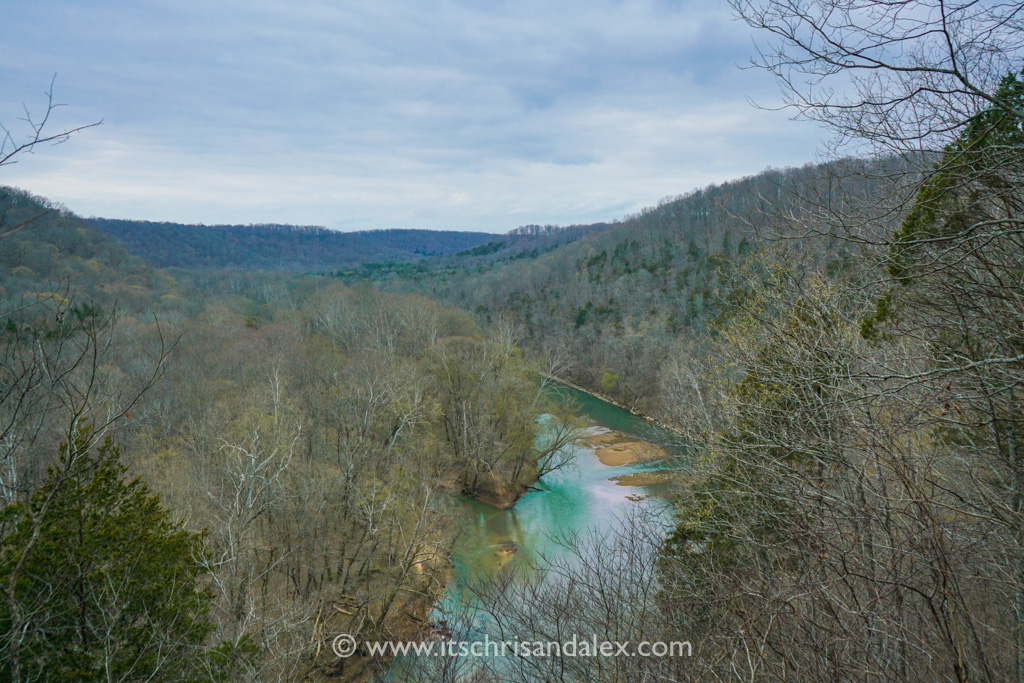
Must-Do Hikes
Lastly, don’t even think of leaving the park before doing these activities! These were some of our favorite memories at Mammoth Cave National Park.
Cedar Sink Trail
1 mile – Cedar Sink Trail is a lollipop loop trail that offers sweeping views of the massive Cedar Sinkhole. First, follow the trail and we recommend heading down the metal stairs when arriving at the fork. Work harder not smarter, right?
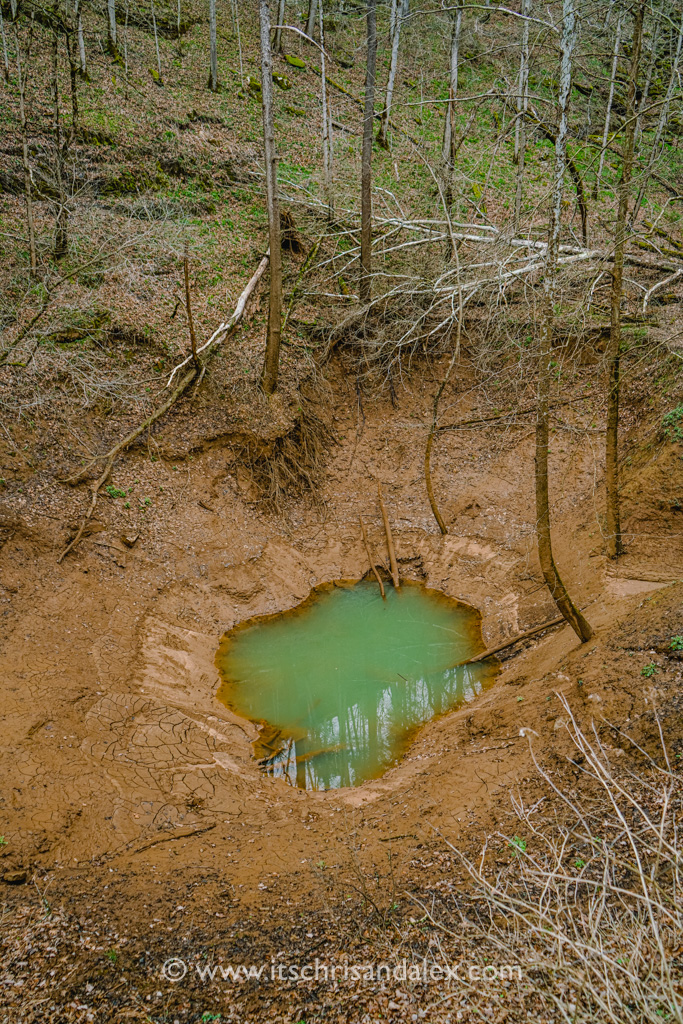
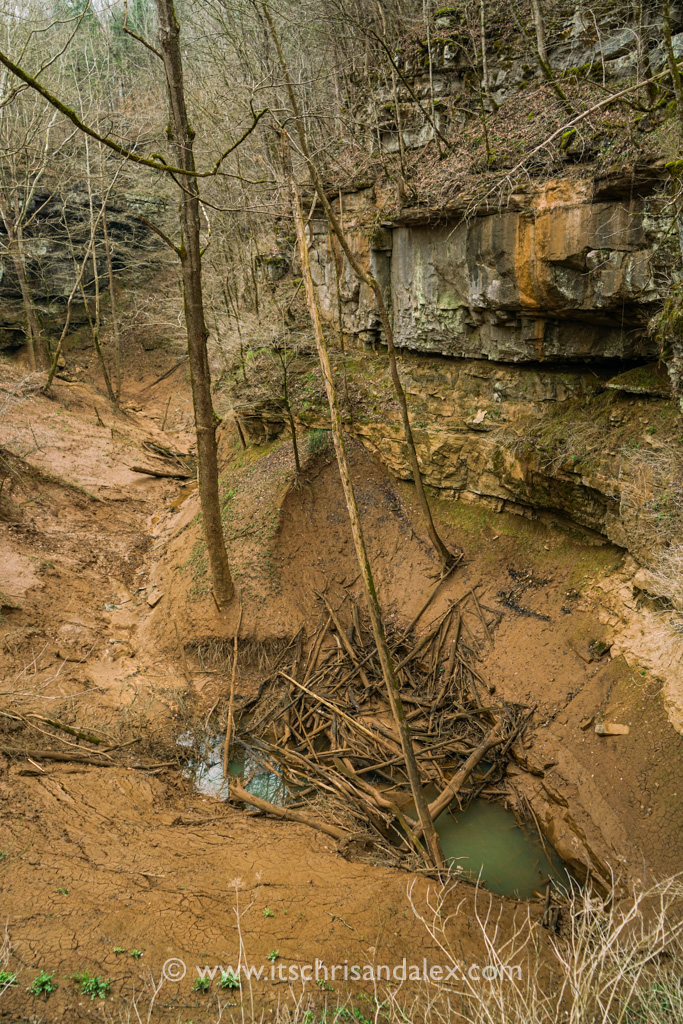
The deep depression is outlined with layers of towering limestone, and the viewpoints are some of the most dramatic views in the park. Levels were quite low around our visit but come after a proper day of rain to see the fullness of the sinks. Most importantly, make good use of each of the observation decks in the area because every view is stunning!
Hands down, this was Alex’s favorite hike during our time at Mammoth Cave. Try as we could, it was impossible to convey how massive and impressive the canyon of limestone was on either our phones or camera. You can’t help but feel minuscule when you stand in a karst landscape that gives way to an even more massive ecosystem beneath your feet. There were deeeefinitely a few moments of existential contemplation splashed into our time at Cedar Sink. Hence the below photos.
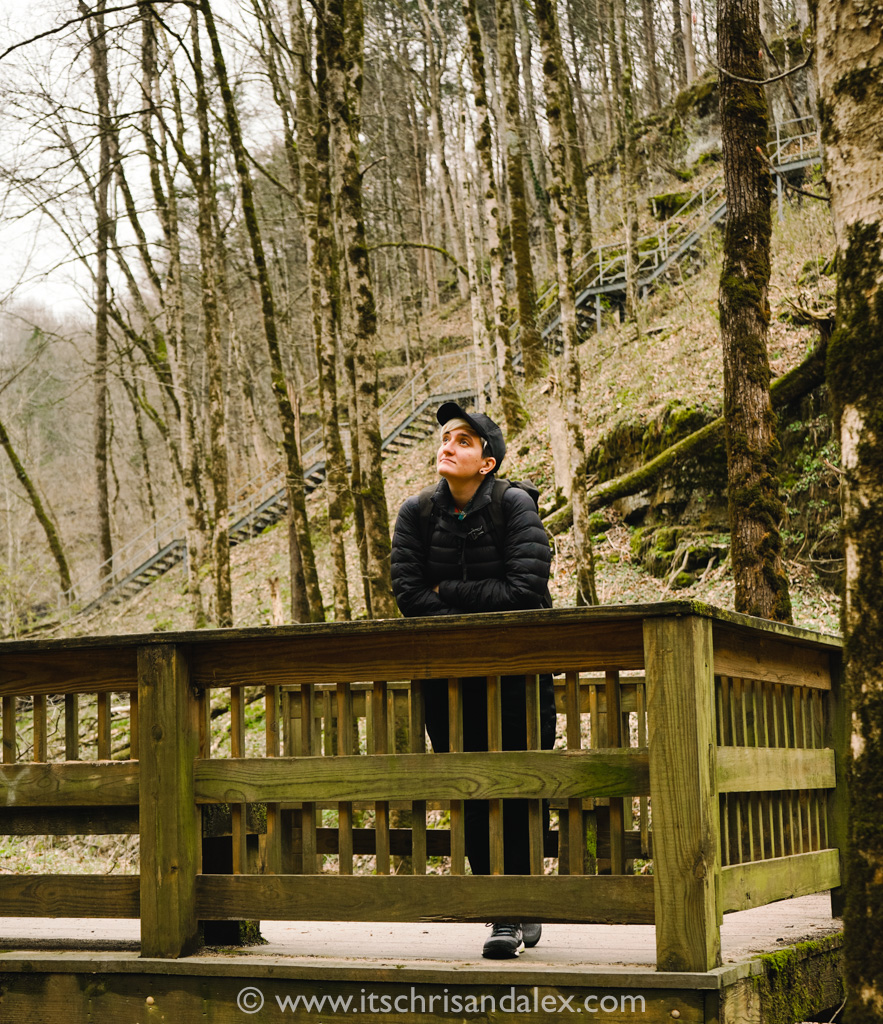
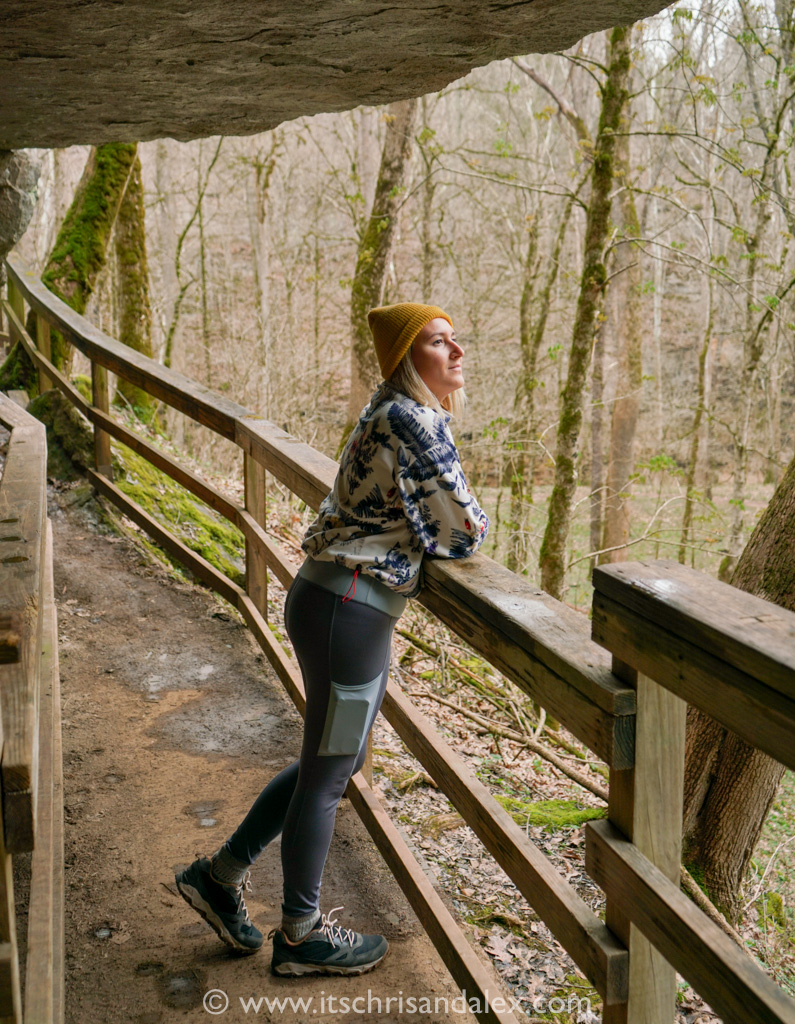
River Styx Spring Trail
0.4 miles – If you’re coming from the Visitor Center, head past the Historic Entrance and down the hill. The trail empties out to a gorgeous observation deck that overlooks the River Styx Spring and the limestone shelf above it. This is another unique opportunity where you can see you saw the River Styx both from several hundred feet underground AND from surface level. This is one of the locations where it empties out to join the Green River. Take note of the large rulers bolted to several trees along the way – when there’s inclement weather, flooding has been known to rise up and fill the whole area. Those measurements mark the severity of floods past.
For a different view back to the Visitor Center, take the steep switchbacks of the Sunset Trail that connect you to Sunset Point and the Heritage Trail. Or head further along and connect to the River Springs Trail, which will eventually intersect with the Echo Springs Trail Walk.
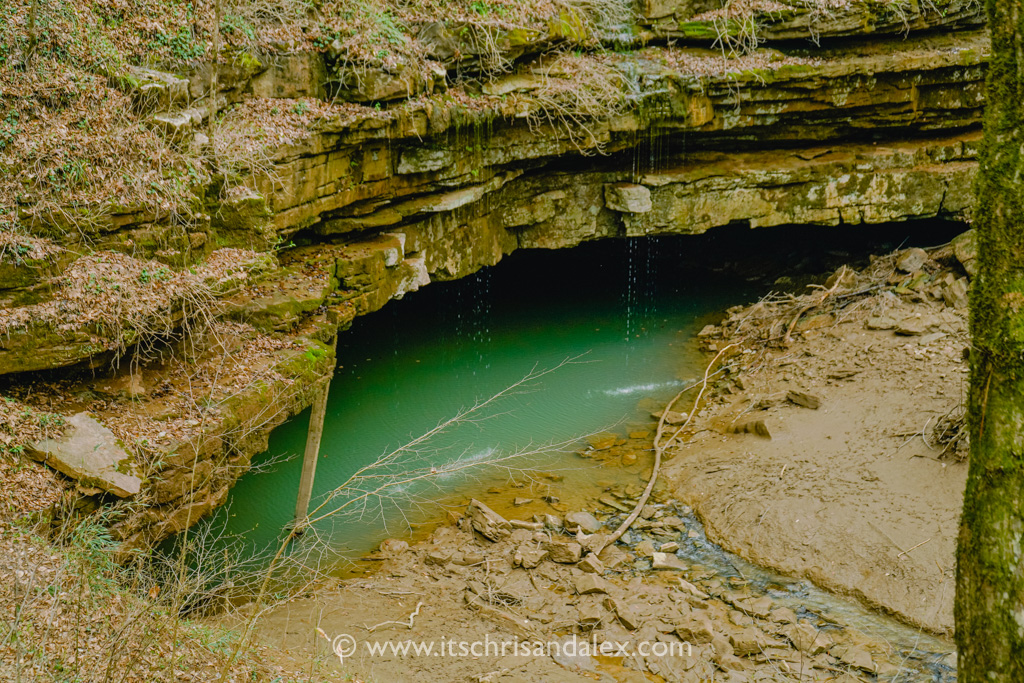
Green River Ferry
So, not a hiking trail per say… but a fun experience! You can take a very short ride on the Green River Ferry with your car or potentially your bicycle! You will find the ferry near the parking lot of the Echo Springs trailhead. The ferry operation is weather permitting, so make sure to check its Twitter page for the closures and the latest updates. It might have been SO fun that we went across only to turn around and head back for an encore. (We actually misread our map but that doesn’t sound as cool does it?)
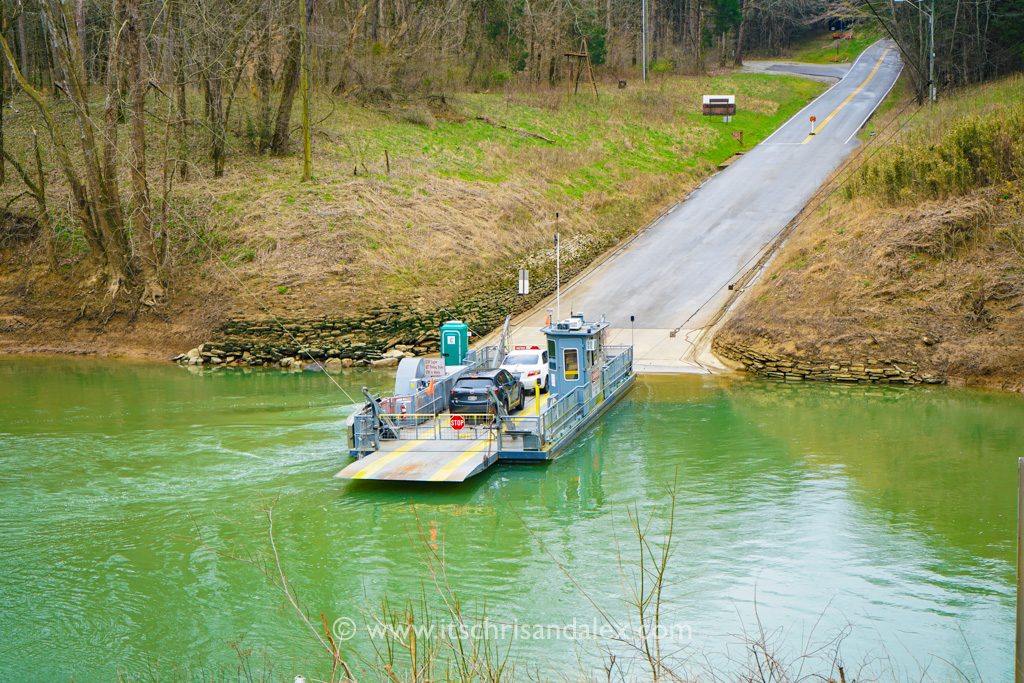
©www.itschrisandalex.com
Animals
While the most iconic residents of Mammoth Cave National Park live underground – of course, it’s the bats! – the front and backcountry are home to a number of other critters. Remember to always maintain a safe distance around animals (despite how cute they can be) and never disturb wildlife. Furthermore, keep in mind that every animal in the national park system is protected by federal law!
Deer – We were definitely fawn’d of all of the white-tailed deer we saw on the trail! They moved about in groups all over the park and paid “doe” mind to us or other hikers. Of course, don’t go about feeding the deer-ly beloved… Are you judging our puns? How deer you.
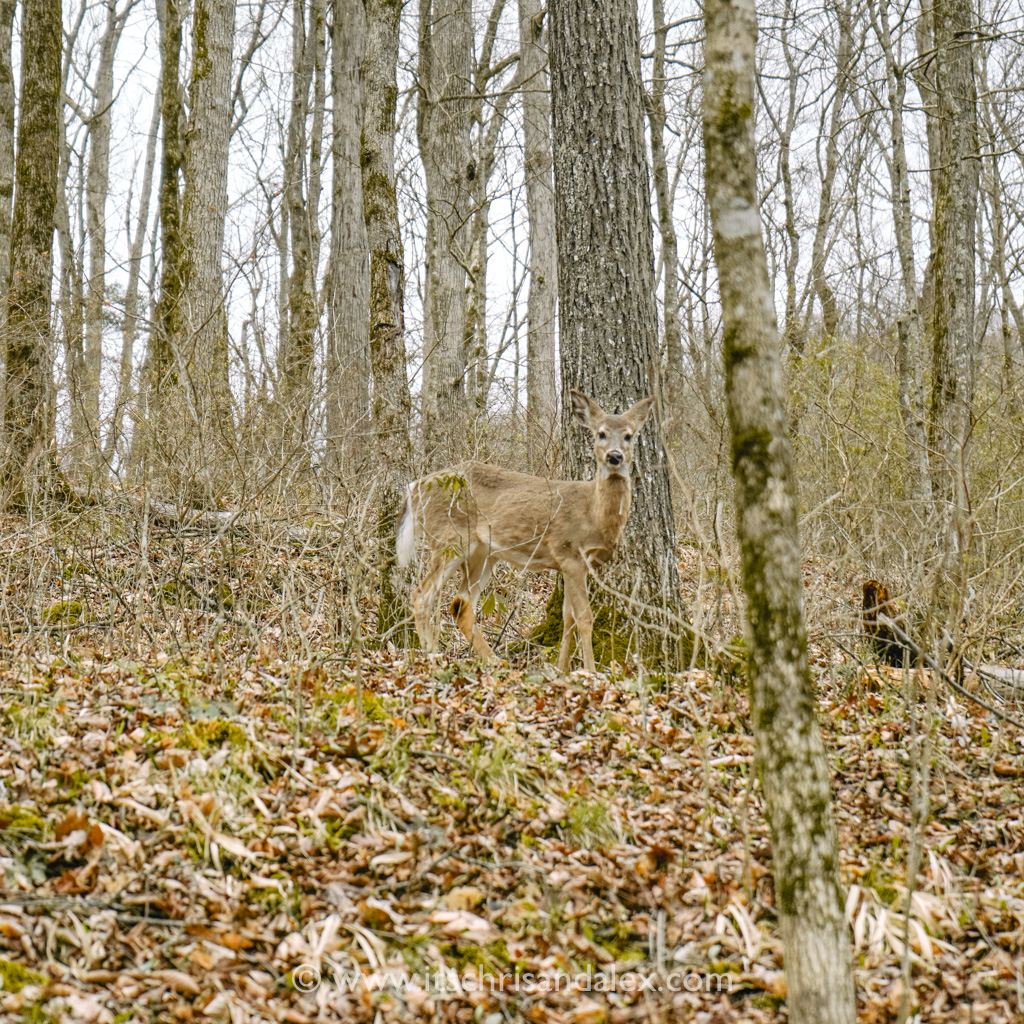
Snakes – Admittedly… snakes are Alex’s biggest fear, so we tend to be on high alert on trails. Fortunately we didn’t spot any on our escapades, but… that doesn’t mean they weren’t around. Rattlesnakes and copperheads are both venomous and have been found on trail and in the water. So, use common sense and LEAVE THEM ALONE. Alex may not like snakes, but she certainly respects them. And so should you.
Birds – Mammoth Cave is a treasure trove for birders – over 75 species call the park home! Songbirds were plentiful when we visited in late March, providing the best soundtrack for our hikes. The best place to arguably bird watch is at Sloan’s Crossing Pond Walk. In the warmer seasons, you might spot heron or kingfisher. So bring those binoculars!
Insects and other teeny tinies – Keep your eyes to the ground because you never know what else you’ll come across! Like this black and yellow flat millipede or one of several snail species.
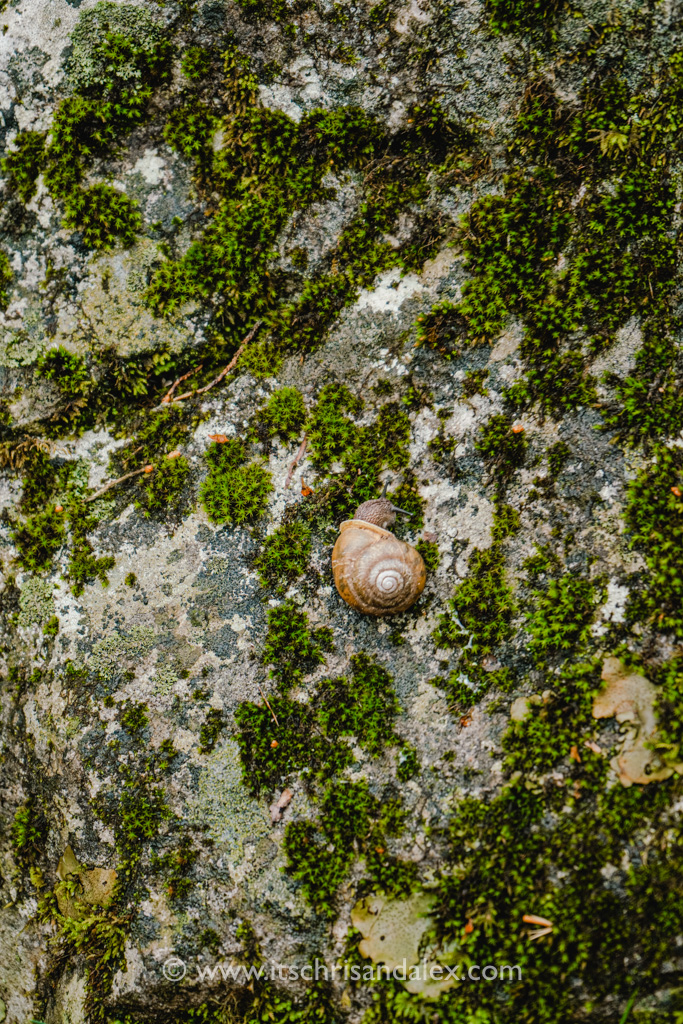
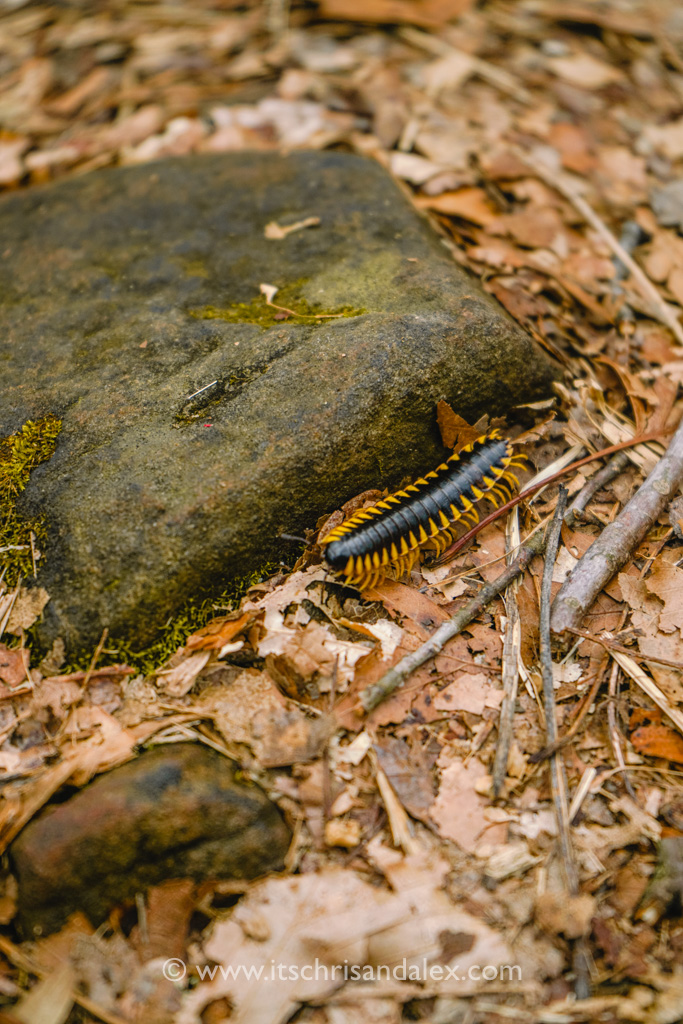
©www.itschrisandalex.com
What to Know Before You Go
- Firstly, and might be a no-brainer, be certain to wear durable shoes or hiking boots! Bonus points if they’re waterproof, too. Heavy rainfalls can cause flooding on the trails.
- Certainly, service in any national park can be spotty, and Mammoth Cave is no exception. Be sure to pick up a map of the front country from the Visitor Center’s kiosk or download your trail on your phone before entering the park.
- Before your visit, check out the most up-to-date ongoings in the park on their Twitter page. Some of the paths we had hiked had been damaged due to recent windstorms, so a few trees had toppled over around or directly onto the path. Some of your desired hikes might be partially compromised, so plan accordingly!
- During the warmer season, beware of the infamous park pests, ticks. In short, a bite from a tick can cause a number of illnesses so practice precaution. Other than wearing high socks and checking our clothes and bodies after a day in the park, we also apply Permethrin to our shoes, socks, and gear. It’s completely odorless and colorless, and a proper application lasts up to six weeks at a time. Permethrin also works against mosquitos, too!
If you have found this guide helpful, we’d appreciate your support by leaving a comment, and by following us on our social platforms so this information can find it’s way into the hands of folks who need it most!
Thank you!
We’re very happy you may want to use our images. However, all photographs in this blog and on this website are originally produced by us unless otherwise stated. We’d love to share but please contact us for permission before using or distributing.

